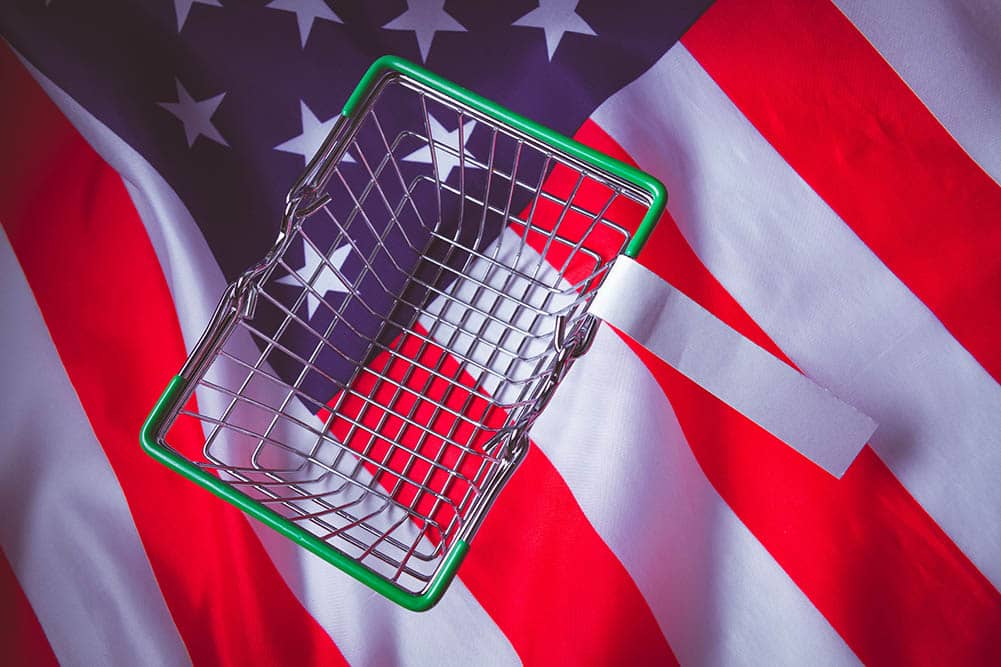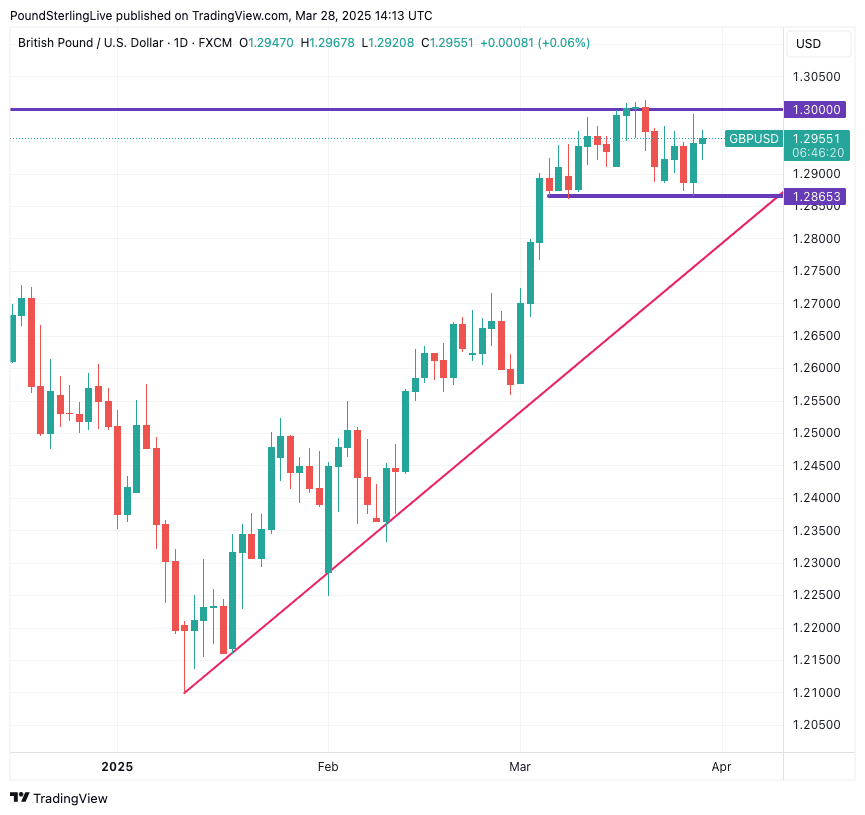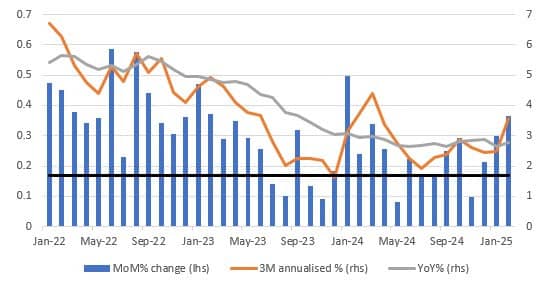
Image © Adobe Images
PCE inflation figures make for uncomfortable reading.
The Pound-to-Dollar exchange rate rallied from daily lows and is on the cusp of retesting 1.30 again after U.S. PCE inflation accelerated in February.
Inflation rose 0.4% month-on-month in February, up from 0.3% in January and ahead of expectations for 0.3%. The annual figure reached 2.8% from 2.7%, also above expectations at 2.7%.
PCE is the guage of inflation the Federal Reserve considers when making interest rate decisions and is closely monitored by markets.
The Dollar fell from its highs in the wake of the numbers, sending a clear interpretation of current U.S. economic dynamics: stagflationary conditions are uncomfortably close at hand.
"Today's US data is only inflaming stagflation fears," says James Knightley, Chief International Economist at ING Bank. "The inflation print is ugly, but we did suspect that if there was a risk to the 0.3% MoM consensus number it was going to be the upside."
"Whiffs of stagflation amid weak spending," says Tim Quinlan, Senior Economist at Wells Fargo, following the data release.
Typically, upside surprises in inflation would signal a hot economy that prompts a rise in U.S. bond yields and a rally in the Dollar. However, we are starting to see the opposite reaction whereby the Dollar falls on above-forecast inflation data.
This is because the rising inflation is not accompanied by the corresponding economic strength: stagflation describes an economy with high inflation and falling growth.
Above: GBP/USD is well supported on dips.
Under such circumstances, the Fed is unable to respond to economic weakness because inflation is going in the wrong direction, ensuring economic weakness becomes further entrenched.
This Dollar-negative setup is increasingly proving to be a function of President Donald Trump's aggressive tariff agenda.
Tariffs risk raising domestic prices and negatively impacting confidence. Earlier this week, the Conference Board said its Consumer Confidence Index fell by 7.2 points to 92.9, its lowest level in over two years. Its Expectations Index dropped 9.6 points to 65.2, making for the lowest in 12 years and well below the 80-point threshold that often signals a coming recession.
PCE inflation is considered a good indication of domestic 'core' inflationary trends.
ING's Knightley says PCE needs to average 0.17% m/m (the blue bars need to average where the black line is in the chart below) over time to bring the annual rate down to the 2% year-on-year leavel targeted by the Fed:
"This will constrain the Fed’s ability to deliver further interest rate cuts," says Knightley.
Economists at Wells Fargo say the big cause of concern is that real personal spending rose just 0.1% in February and came with some modest downward revisions to an already- weak January.
"This doesn't bode well for first-quarter growth, which is already tracking to see negative effects from a pull-forward in demand as businesses rush to secure inputs ahead of tariffs," says Quinlan.
"Ultimately, we're bracing for an ugly Q1 growth print. But the question is: how much weakness is actually the start of sustained behavioural shifts because of waning support factors versus strategic shifts ahead of proposed tariff policy?" he asks.


